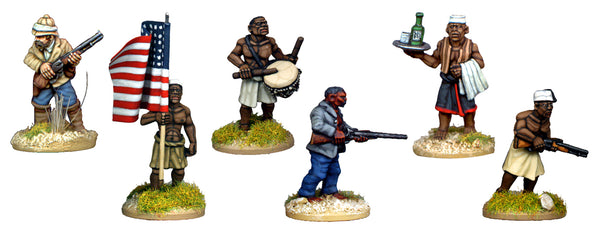Darkest Africa: Askaris
These askaris represent the armed men European explorers took with them into the heart of Africa, and the troops of the European empire builders, like Lugard or Peters, as they seized their first footholds in East Africa. They can also be used as auxiliaries of the Zanzibari Slavers, Ruga-Ruga mercenary troops of warlords like Mirambo or warriors of any of the African peoples who adopted firearms and Swahili dress.
Skin - could vary from yellowish bronze to dark brown. Askaris would not wear warpaint, although some would have tribal scars. Askaris recruited in the Southern Sudan could be very dark, almost black.
Loincloths - most commonly off-white cotton, sometimes dyed yellow-brown, indigo (all shades from blue-black to faded denim) or white with a narrow reddish border. Other more colourful fabrics included blue with a broad red stripe, dark blue with a red or yellow border, multi-coloured checks and sometimes plain red. In practice these best clothes would be kept for special occasions, and everyday loincloths would be ragged and stained.
Waistcoats - often dark blue or red in imitation of the Zanzibaris.
Coats and Shirts - if worn at all, could represent a rudimentary uniform eg the white coats with red or blue cuffs and a matching 1' square between the shoulders worn by Imperial British East Africa Company troops in 1890. The first proper askari uniforms tended to be khaki in British service, and blue in Belgian or French employ.
Hats - either fezzes and caps, in red or white, or turbans, usually white.














